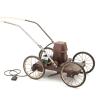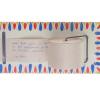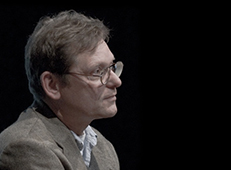Answering machine?
While radio, and later television, were widespread, other forms of communication in the GDR were often lacking technical facilities.
Telephone lines to some areas had not been extended or modernized since before WWII and people could not be provided with their own telephone connection. If people wanted to talk to each other they had to visit and or leave a note at the door if they weren’t home.
The scarcity of telephone lines was not only a problem in the GDR. The author remembers having waited for a phone for several years in the early 1970s in West-Berlin. In the GDR, there was sometimes only one single telephone line in vilages which belonged to the post office or the village shop. But even in Berlin the everday routine never included telephone calls in private life. Necessary phone calls had to be made from work.
The note pad shown was assembled by a carved and laquered wooden plate with a cash register paper roll on top. It is one of several examples of home-made objects in the museum collections.
 Previous Story
Next Story
Previous Story
Next Story
How to cite this page
Andreas Ludwig, 'Answering machine?', Inventing Europe, http://www.inventingeurope.eu/story/answering-machine
Sources
- Abc des Ostens. 26 Objektgeschichten, edited by Dokumentationszentrum Alltagskultur der DDR. Cottbus, 2003.
- Alltag: DDR. Geschichten, Fotos, Objekte, edited by Dokumentationszentrum Alltagskultur der DDR. Berlin: Ch. Links, 2012.
- Fortschritt, Norm & Eigensinn. Erkundungen im Alltag der DDR, edited by Dokumentationszentrum Alltagskultur der DDR. Berlin: Ch. Links, 1999.
- Guter Rat, Verlag für die Frau, Leipzig, 1965-1990 (formerly Guter Rat für heute und morgen).
- Krössin, Dominque. “Wie mach ich´s mir selbst? Die Zeitschrift practic und das Heimwerken.” In: Wunderwirtschaft. Die DDR-Konsumkultur in den 60er Jahren, edited by the Neue Gesellschaft für bildende Kunst,160-165. Köln, Weimar, Wien: Böhlau, 1996.
- Magazin für Haus und Wohnung. VEB Verlag für Bauwesen Berlin.
- Merkel, Ina. Utopie und Bedürfnis, Die Geschichte der Konsumkultur in der DDR. Köln/Weimar/Wien: Böhlau, 1999.
- Pahlke, Stefan. “Warten auf ein Telefon, mit Permanenz und Penetranz.” In Wunderwirtschaft. Die DDR-Konsumkultur in den 60er Jahren, edited by Neue Gesellschaft für bildende Kunst, 166-174. Köln, Weimar, Wien: Böhlau, 1996.
- Practic. Verlag Junge Welt, Berlin, 1967-1990 (formerly: Modellbau und Basteln).
- Wunderwirtschaft. Die DDR-Konsumkultur in den 60er Jahren, edited by the Neue Gesellschaft für bildende Kunst. Köln, Weimar, Wien: Böhlau, 1996.




















